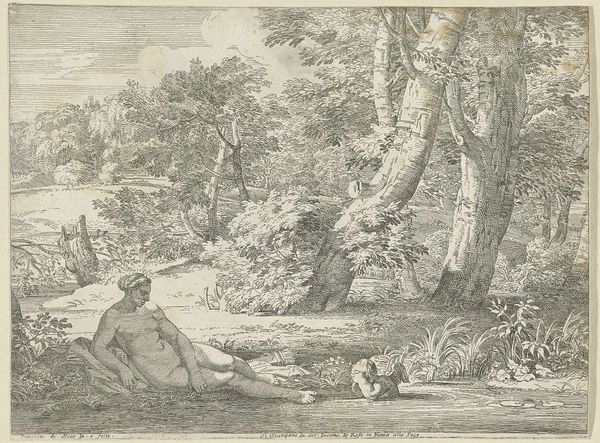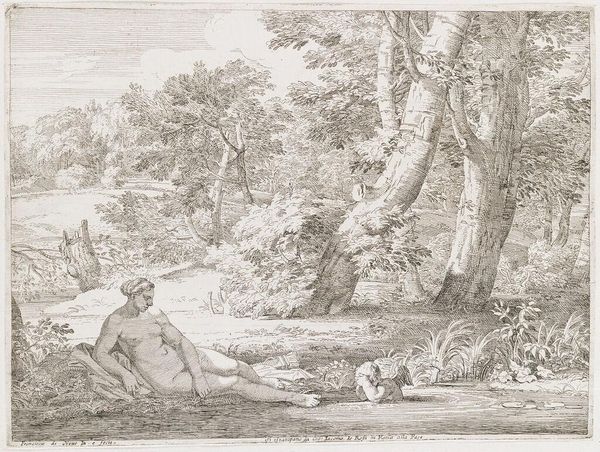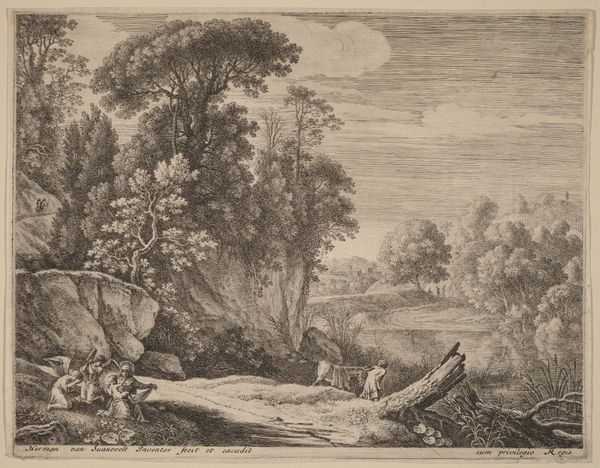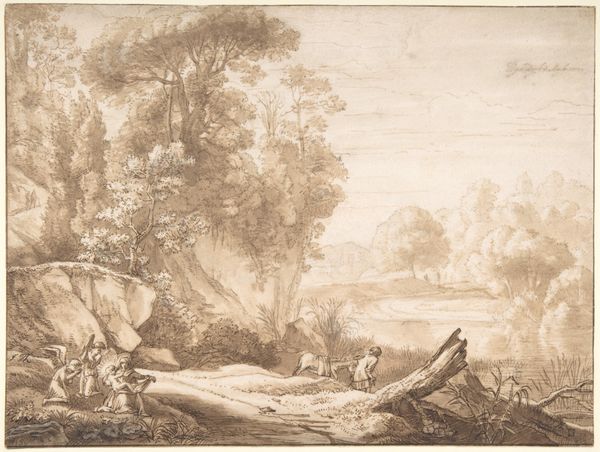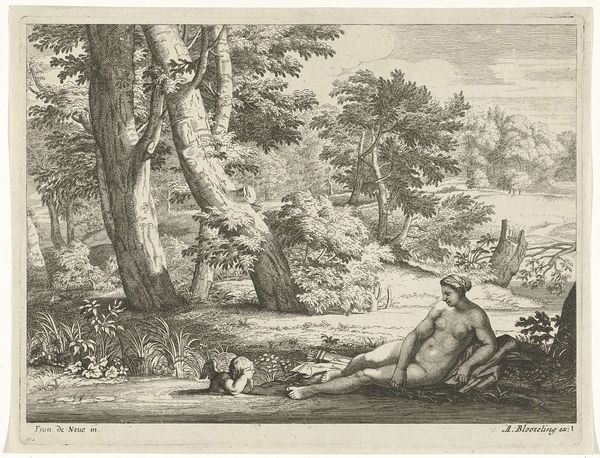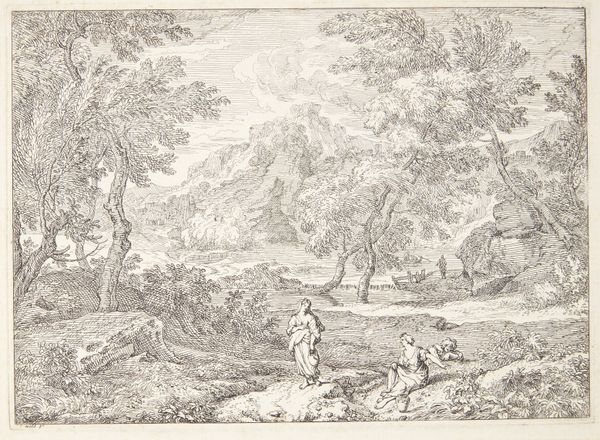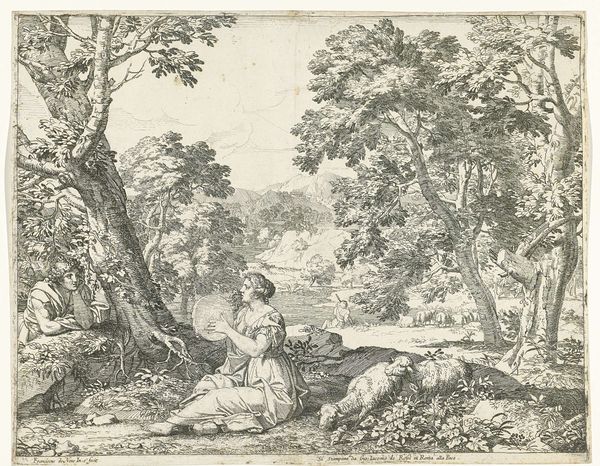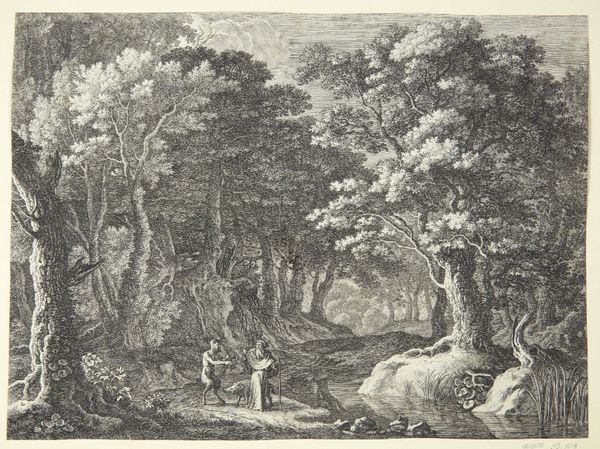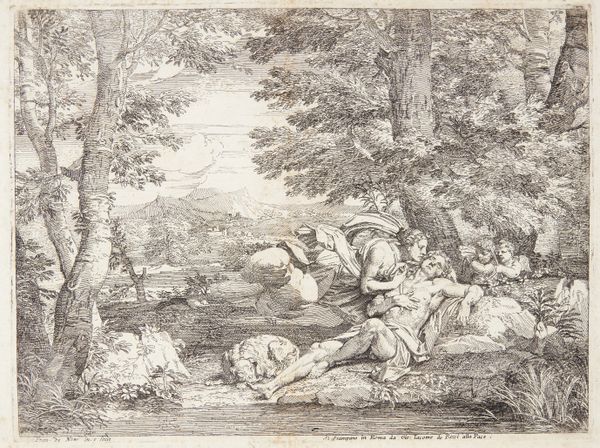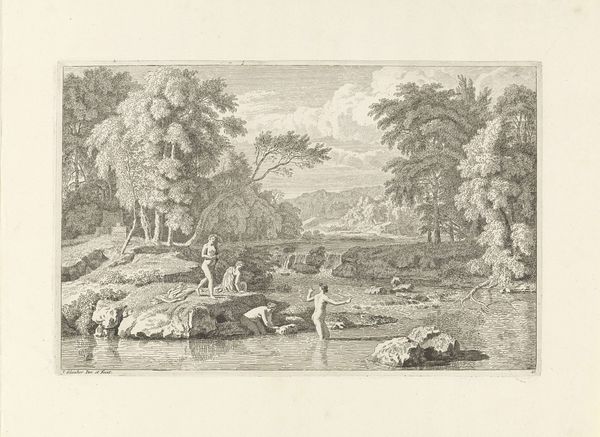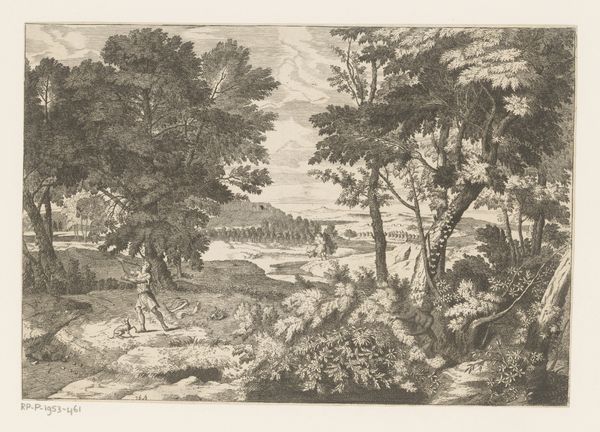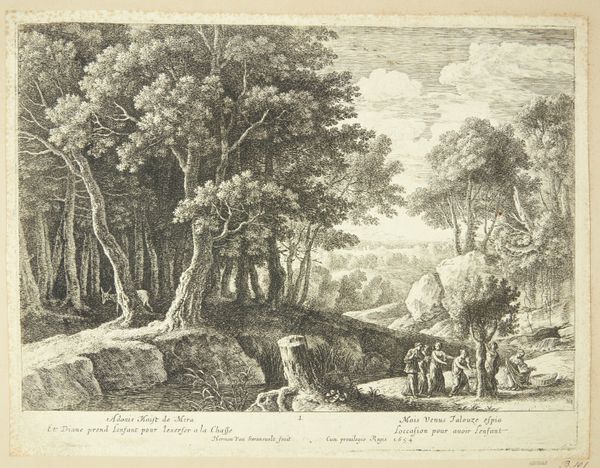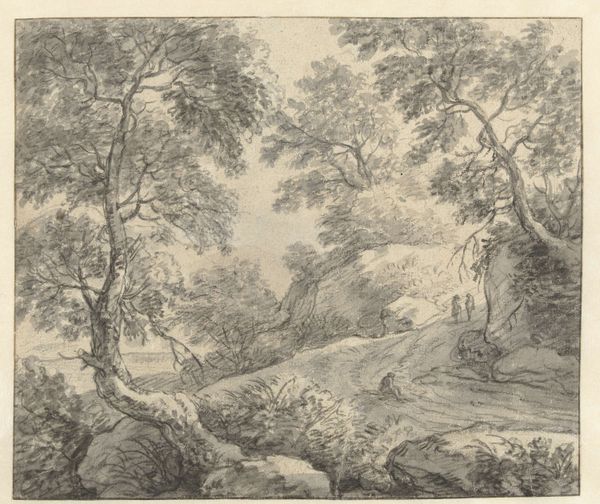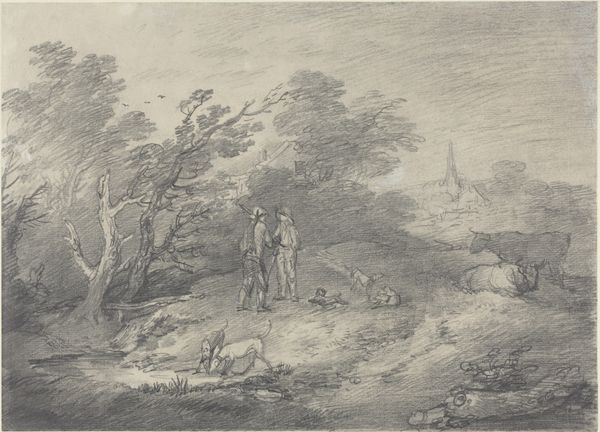
print, etching
#
allegory
#
baroque
# print
#
etching
#
landscape
#
figuration
#
nude
Dimensions: 196 mm (height) x 262 mm (width) (plademaal)
Curator: Let's consider "Venus and Cupid by a Forest Lake," an etching by Franciscus de Neve, likely created sometime between 1606 and 1688. Editor: At first glance, it feels very still, almost staged. Venus reclining by the water, Cupid nearby... It lacks a certain energy, even considering the Baroque context. Curator: Notice how De Neve organizes the composition. The diagonal lines, formed by Venus's reclining figure and the trees, create a sense of depth and guide our eye through the landscape. It's quite classical in that respect, harking back to earlier traditions. Editor: Right, the gaze follows Venus. She anchors the space, directing attention, in accordance with 17th-century beauty politics. Though even the swan subtly reflects those very norms. Beyond this, consider how different levels of status played out between patrons and even the most elite Baroque artists like De Neve. Curator: Absolutely, though from a formal perspective, note the balance between light and shadow. The delicate etching technique allows for nuanced gradations, emphasizing the textures of the foliage and the softness of Venus’s skin. Observe also how the use of line weight creates the illusion of volume. Editor: It also seems pertinent that the swan itself alludes to the narratives and even scandals related to illicit desire for members of the aristocracy or upper classes; such classical allusions helped normalize behaviors in those upper tiers of society. It allowed commentary without explicit expression. The art provided validation of behaviors already playing out behind closed doors. Curator: Intriguing. It brings a different understanding of this depiction. So much relies, I agree, on a complex symbolic language. Seeing it in this light illuminates the social values this art participated in preserving and propagating. Editor: Exactly, and perhaps more pointedly now, considering its subtle advocacy on the social standing of a specific cohort of people. It's important not to ignore art's functional positionality. Thank you for emphasizing these intrinsic aesthetic choices. Curator: A perspective greatly appreciated, thanks to you!
Comments
No comments
Be the first to comment and join the conversation on the ultimate creative platform.
